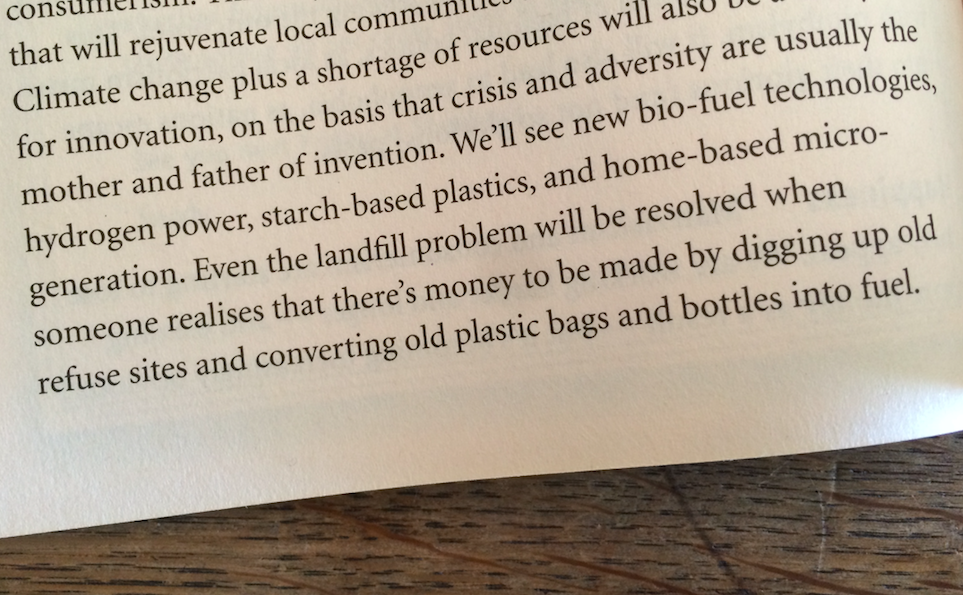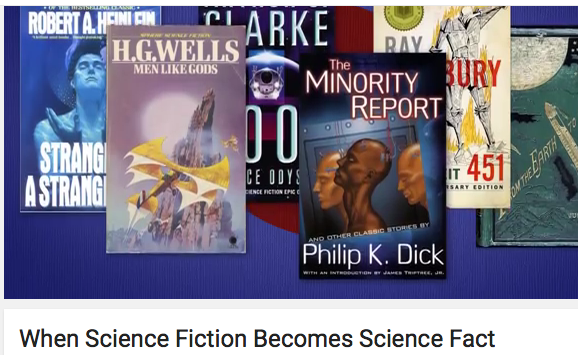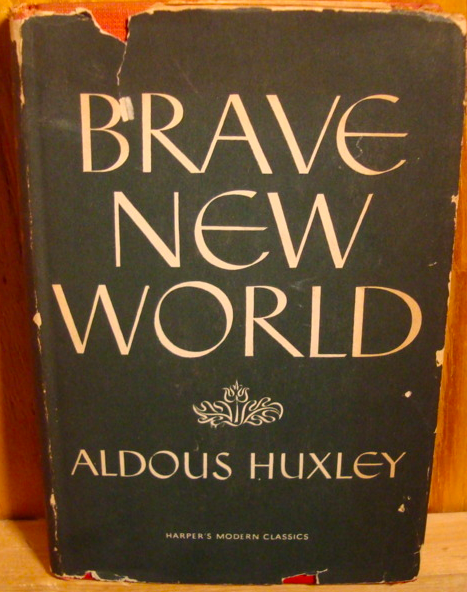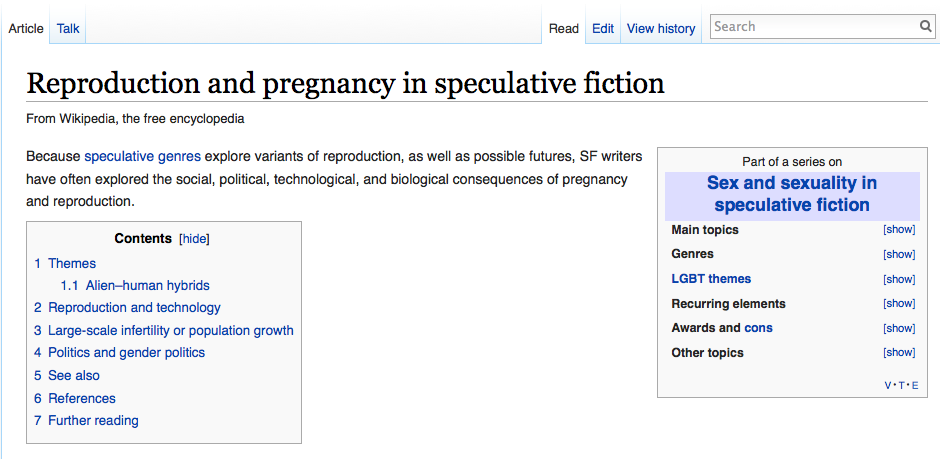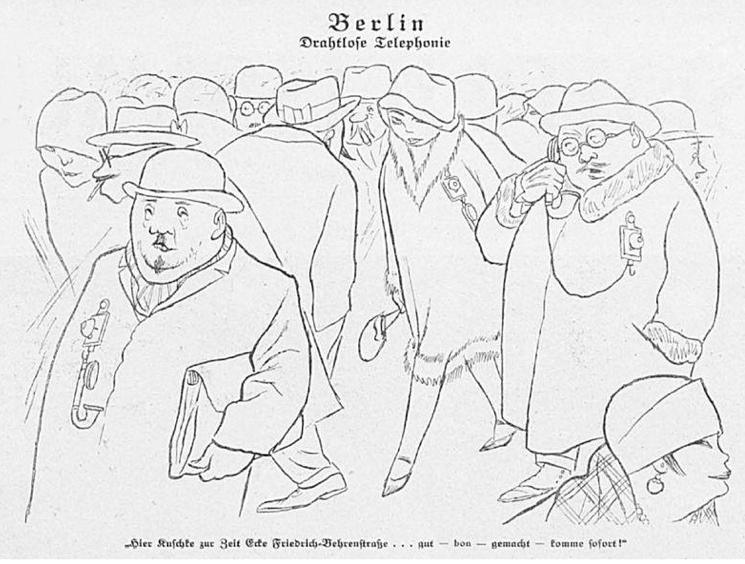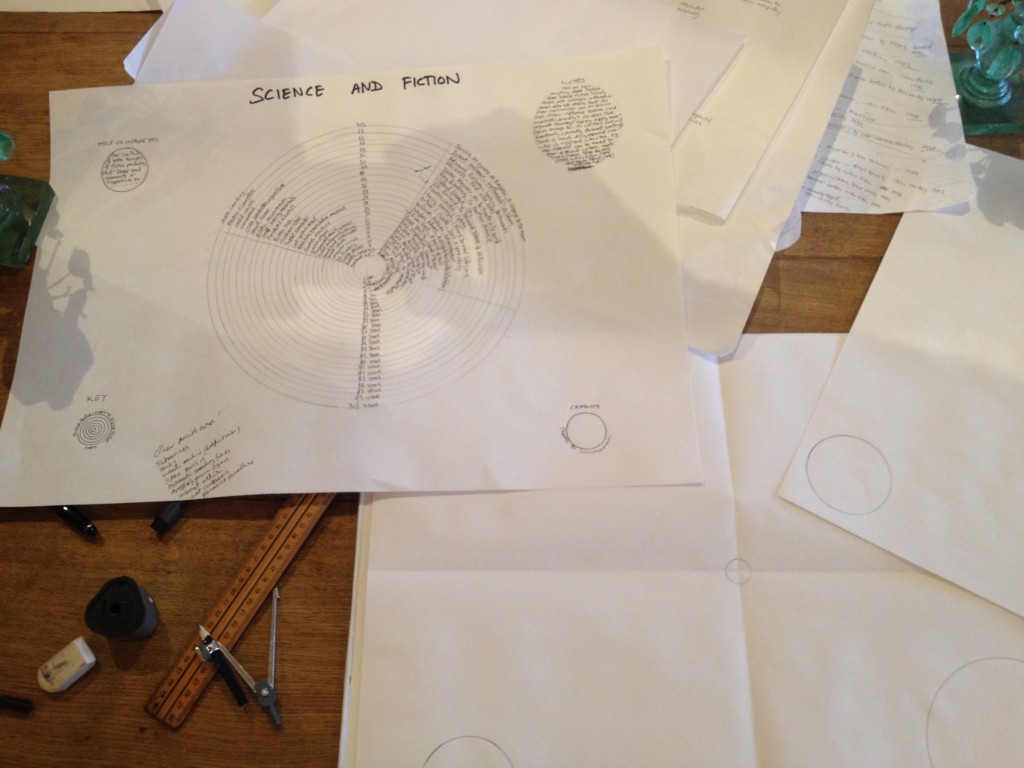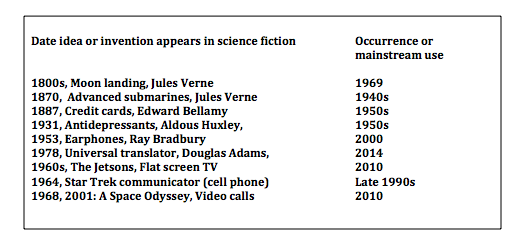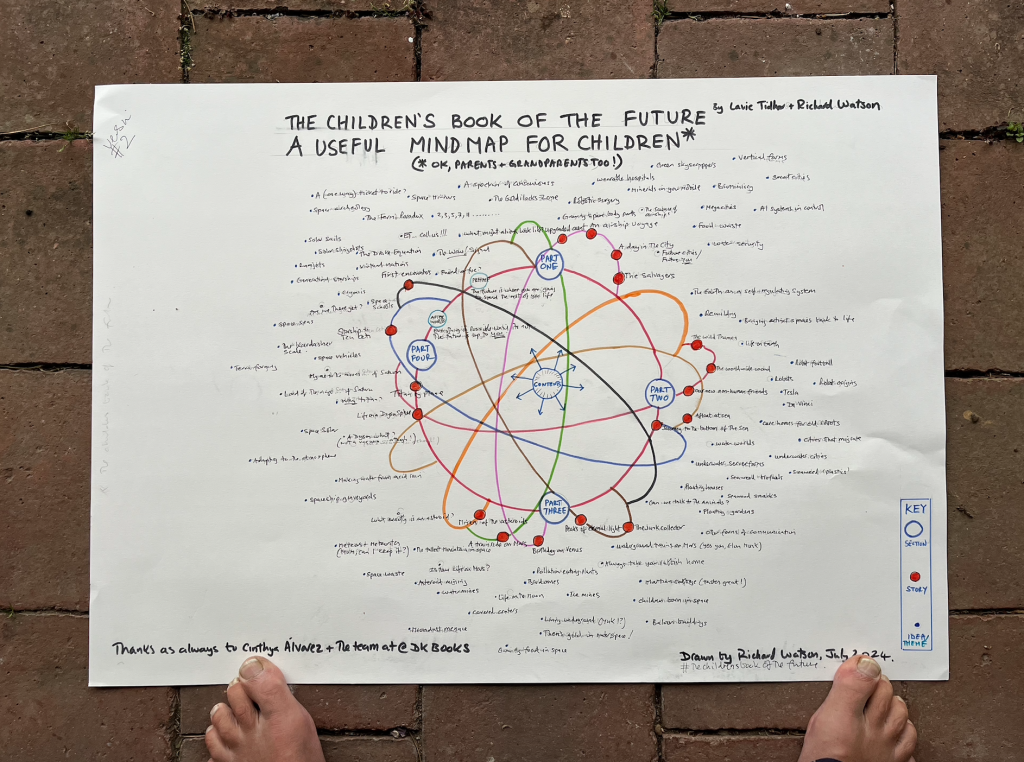
Category Archives: Science and fiction map
The Future: Fiction vs. Fact
This is getting ridiculous. I keep making jokes (in print) that come true or at least get seriously discussed. How far-fetched do you now have to make things in order that they remain fiction or speculation? I had the idea of people digging up landfills to recycle pastics into fuel back in 2006 (it appeared in my book Future Files in 2007). See above. Last week I saw this…see below.
AI in Sci-Fi
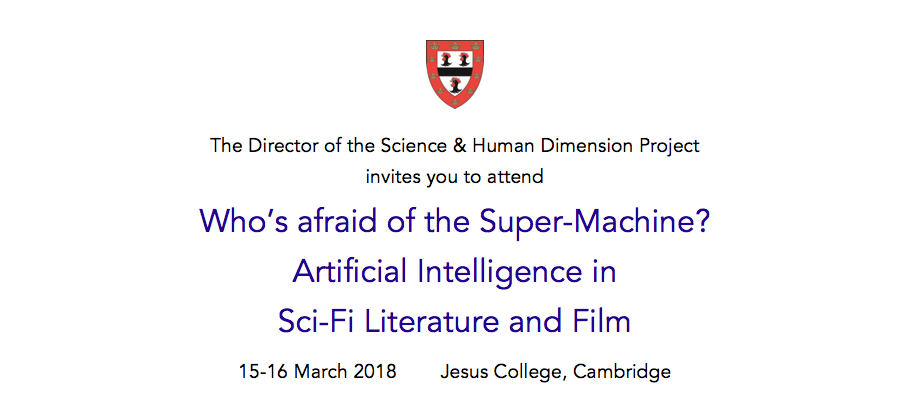 This is going to be fun…
This is going to be fun…
Science & Human Dimension Project.
Science and Fiction
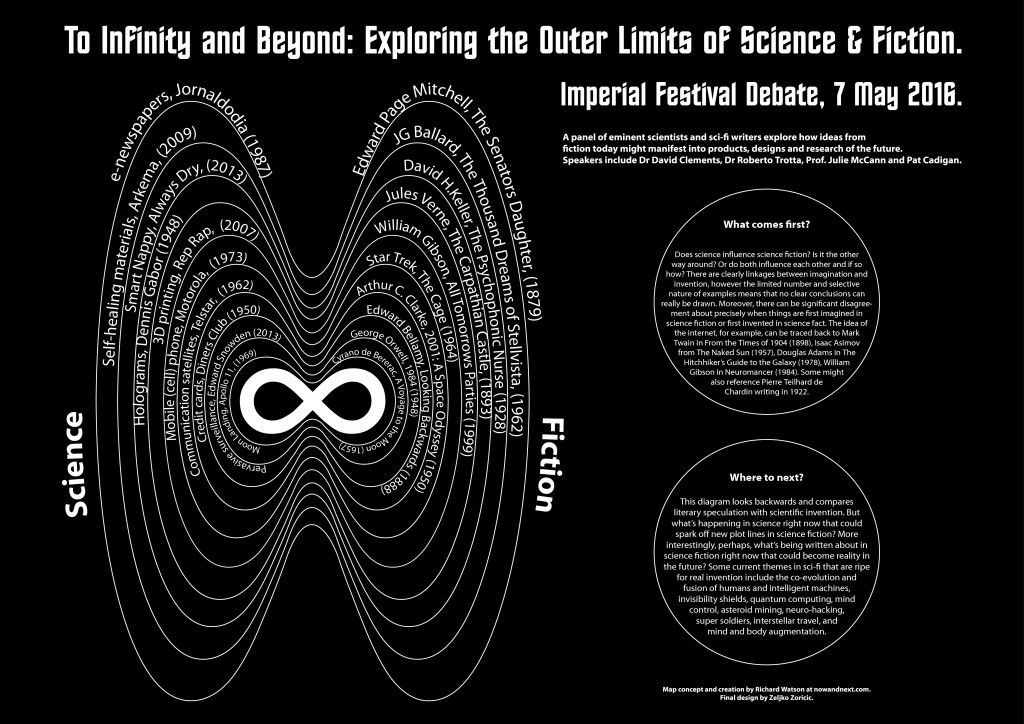 Couple of public events people may be interested in. The first is Hackstock this Friday. It’s at The Trampery, 239 Old Street in London and it’s part of the London Sci-Fi Festival. I’m in conversation with science fiction author Lavie Tidhar. The second event is on May 7 and it’s a panel death about what’s next in science and fiction. If you’re a fan of Sci-Fi you really should come along. I’m moderating.
Couple of public events people may be interested in. The first is Hackstock this Friday. It’s at The Trampery, 239 Old Street in London and it’s part of the London Sci-Fi Festival. I’m in conversation with science fiction author Lavie Tidhar. The second event is on May 7 and it’s a panel death about what’s next in science and fiction. If you’re a fan of Sci-Fi you really should come along. I’m moderating.
When science and fiction collaborate
I’ve been thinking about the science and fiction map again, and about a possible event looking at the connections between imagination and invention – and who exactly is influencing whom here?
Is it possible to write good science fiction without a good understanding of science and do the thoughts contained within academic institutions naturally permeate into the broader public consciousness, thereby creating a series of self-fulfilling prophesies? (if enough people think about something someone will write about it and then someone will eventually invent it). Perhaps a panel discussion one evening with a couple of academics and sci-fi writers?
Nice PBS (US) video on the subject here – 8 minutes.
Another nice link here.
Science vs. Fiction – sci-fi fans needed!
Just wondering if there are any sci-fi fans out there with a bit of spare time and brainpower on their hands. I’m trying to find out whether sci-fi had anything to say about oral contraception prior to the arrival of Carl Djerassi in the 1950s. and 1960s
There’s plenty of mention of infertility treatments and artificial reproduction – Brave New World (1932), The Tissue Culture King (1926) and so on, but nothing as far as I can see on the opposite.
Relationships between Science and Fiction
Still digging into science vs. fiction – looking at holography, artificial reproduction, high-speed trains and fibre optics among other things. Just stumbled into this (below) whilst researching Jules Verne. Some good points, for example…
“what is usually cited as an “invention” is almost always the last development in a long series of discoveries that led to the first successful commercial product.”
Jules Verne
Scientific Prophet or Just a Good Guesser?
Although his books were written well over a century ago, Jules is rightly considered the father of modern science fiction. A number of his tales are still good reading and – particularly when adjusted a bit – have been quite adaptable to the silver screen. Two films which stand up particularly well are 20,0000 Leagues Under the Sea and Journey to the Center of the Earth. Both movies starred James Mason and the latter film had Pat Boone’s famous nude scene – a nude scene with sheep and nuns no less.
However, as the millennium approached, Jules’ stories seemed to be falling out of favor as video games, rather than well-written novels, became the basis for science fiction movies. True, there were a couple of attempt to remake Journey to the Center of the Earth as made-for-TV movies, but both were flops. So it seems like Jules was finally going the way of most pre-Twentieth Century science fiction authors. After all, once technology catches up with the imagination, the sci-fi books become fantasy at the best and period peices at their worst.
Then suddenly Jules’ reputation got a shot in the arm. With much fanfare it was announced, a “lost” manuscript, Paris au XXème Siècle (Paris in the Twentieth Century) would be published! Sure enough, in 1994 out came a French edition and that was followed a year later by a printing by an American publisher.
The truth, though, is the manuscript had never been lost, but was just so bad that Jules’ publisher, Pierre-Jules Hertzel, didn’t want it. Pierre had just published “Five Weeks in a Balloon” and thought Paris would actually hurt Jules’ burgeoning reputation. So Verne fans had to wait a year until Voyage au Centre de la Terre came out. Pierre’s judgment was sound. At almost every level Paris in the Twentieth Century is an unintentionally comic novel while Journey to the Center of the Earth is still a great book to read.
Strangely enough and once it was published, Paris in the Twentieth Century became the talk of the Sci-Fi community despite its ridiculous plot (what there was of it) and absolutely horrible characterizations. Verne fans hailed Jules as the Great Predictor of the Future. Gasoline powered cars, electric motors, electric lights, high speed trains and subways were all predicted way back when people rode on horses, burned whale oil lamps, and chugged along coal driven and soot begrimed railroads. Jules hit the 20th Century right on the button. And all in 1863. Amazing!
Actually it’s modern education that is failing here. Far from predicting products of the Twentieth Century, most of what Jules wrote about were already the high tech R and D gizmos of the time, and he simply speculated that they would eventually become commercial. Practical internal combustion engines, incandescent light bulbs, electric motors, and the London Underground were around in 1863. And when you read Jules’ predictions on how they were actually implemented you have to smile a bit.
High speed trains? He has them going at 1000 kilometers per hour (almost Mach 1). More laughably they are powered by compressed air which pushes a flat metal disk through a tube. A magnet attached to the end of the train pulls it along.
Motor vehicles powered by internal combustion engines? The concept was old even in Jules’ time, and a practical prototype was designed as early as 1807. Working vehicles had been built long before Jules put pen to paper, and as Jules was writing his book, Jean Joseph Etienne Lenoir actually drove a car powered by liquid petroleum the 50 miles from Paris to Joinville-le-Pont.
Did Jules know about this? Absolutely. Jules has everyone driving the Lenoir automobiles in his book. But even that prediction was off. Jules has everyone driving an earlier version of the car that was powered by illumination gas – that is, the precursor of natural gas that was used in gas lamps and stoves.
Jules apparent prescience seems so incredible simply because people are forgetting that what is usually cited as an “invention” is almost always the last development in a long series of discoveries that led to the first successful commercial product. So we have Edison inventing the light bulb in 1880, Benz the automobile in 1885, and Marconi the radio in 1896.
Overall Jules’ predictions are about par for someone who is up on current technology and has a fertile imagination. Certainly when you consider Jules was not an engineer or a scientist, and in fact had studied to be a lawyer and worked as a stockbroker, his guesses are not bad. It also helps, though, when the readers don’t pay that close attention to the details and mistranslations and only remember the guesses that hit pretty close to the mark – and not the ones that fell flat.
Link to original article here.
Relationships between science and fiction
Still working through whether or not there might be a good graphic in the linkages between scientific fact and speculative fiction. In this vein, came across this today, which is one of the best things I’ve read about trends and counter-trends, especially with regard to technology. Full article from the Guardian here.
“It’s always wrong to extrapolate by straightforwardly following a curve up,” he (Kim Stanley Robinson, a sci-fi writer) explains, “because it tends off towards infinity and physical impossibility. So it’s much better to use the logistic curve, which is basically an S curve.” Like the adoption of mobile phones, or rabbit populations on an island, things tend to start slowly, work up a head of steam and then reach some kind of saturation point, a natural limit to the system. According to Robinson, science and technology themselves are no exception, making this gradual increase and decrease in the speed of change the “likeliest way to predict the future”.
“We might be in a very steep moment of technological and historical change, but that doesn’t mean that it will stay that steep or even accelerate.” Practical and theoretical constraints, which go beyond even problems such as climate change with which we’re struggling now, will eventually slow us down, Robinson continues. “What I’m assuming is that there are some fundamental issues that are going to keep us from doing things much more spectacularly than we are now.”
Sci fi movies (and books) that came true
Just playing around with an idea, which is whether there’s anything interesting to be said about speculations in science fiction versus science fact. Seems like quite a bit of what gets written about in fiction tends to become fact given enough time. This could be chance or it could be that if it gets written about, it gets thought about.
Some examples:
1657, Savien de Cyrano de Bergerac, A Voyage to the Moon – Apollo 8, 1969.
1888, Edward Bellamy, Looking Backwards (Credit cards) – Diners Club, 1950.
1964, Star Terk, The Cage, (mobile phones) – Motorola, 1973.
One issue is a lack of data. I have about fifty examples of things that got thought about and then happened, mostly from the 1950s, 1960s, and 1970s, but that’s not many. There’s also the infinite monkeys argument – given enough predictions something will eventually be correct. But are these really predictions?
There’s also the issue of which writer is right. Many musings are vague in terms of how things might work out and often there are numerous examples of people ‘predicting’ the same thing. For example, the internet, as an idea, can be traced back to Mark Twain, Douglas Adams, Geoffret Hoyle, William Gibson and many others.
What interests me most, apart from who is influencing what, is the time difference between speculation and appearance or invention. It does seem to getting shorter.
Links between science fiction and science fact
How Ideas Happen
Here’s a perfect example of how random events combine to create ideas and insights. I’ve been writing something about whether or not forecasting the future is futile or functional. It’s been a disaster. It jumps around, it doesn’t flow and I’m not really sure what the key thought is. I’ll persist for a while, but my prediction is that it’s heading for the wastebasket.
At about the same time as writing this piece I was at Imperial College and visited the science fiction library. Nothing dramatic, although the experience sparked off a thought about the extent to which science fiction influences invention. If you took a long enough time period would sci-fi writers prove to be better than futurologists at predicting the future? This didn’t really go anywhere initially, although a couple of lines in my piece did reference this thought and I had the idea of a call-out box (above) showing a couple of ideas in science fiction that became science fact.
A week later I’m at Imperial again and it suddenly hit me that you could create a rather wonderful graphic showing the connections between imagination and invention. With enough examples (50?, 100?) you could possibly make an interesting point about the time lag between speculation and appearance. For example, is the time between these two points getting shorter?
Very rough pencil sketch to come….

